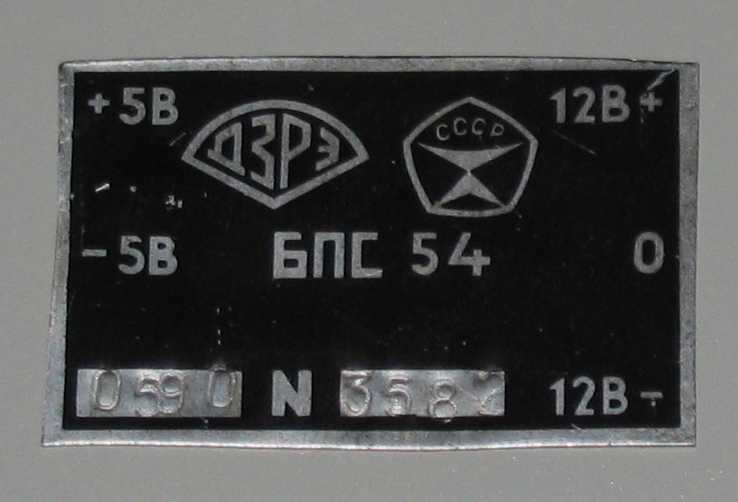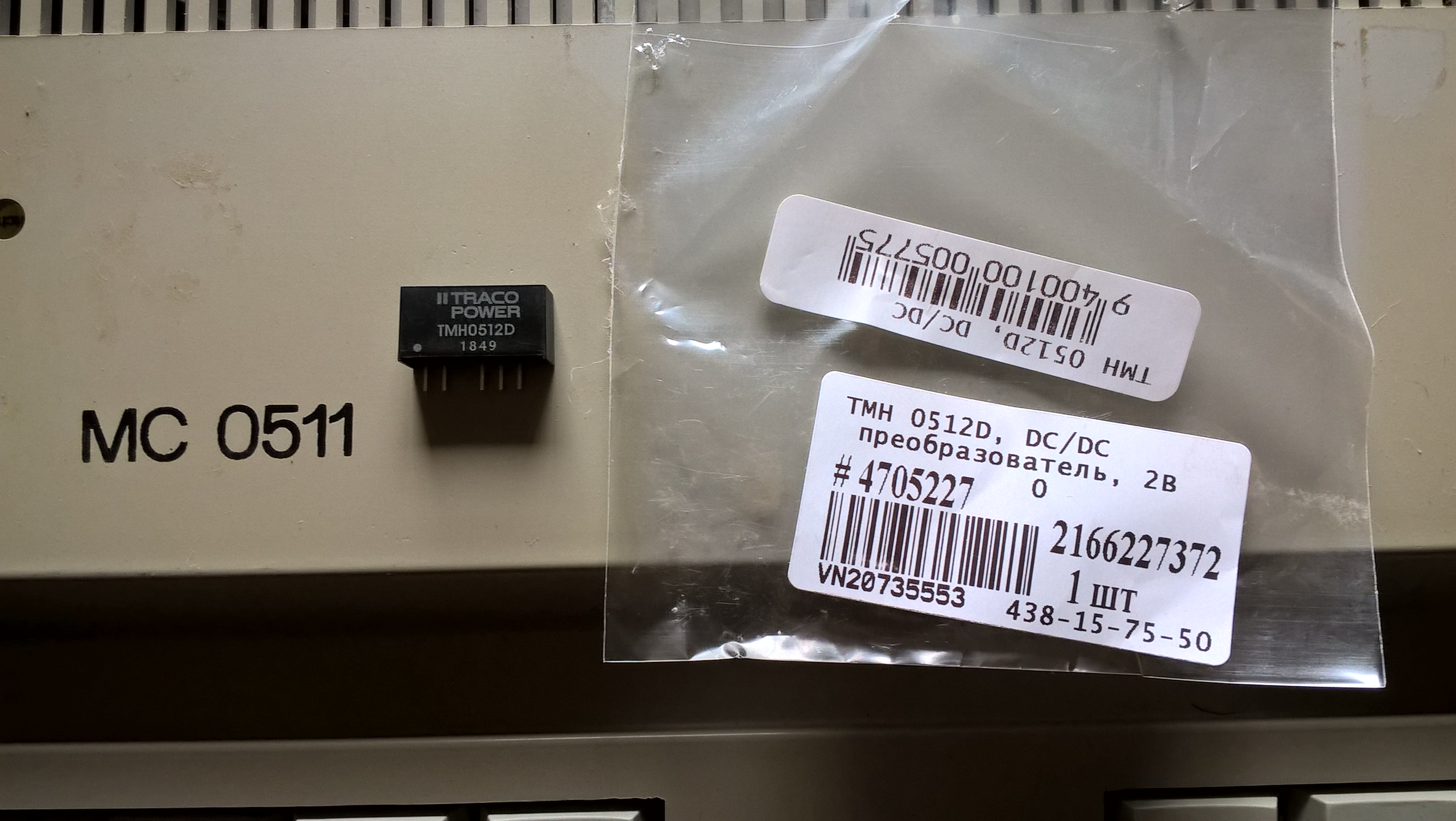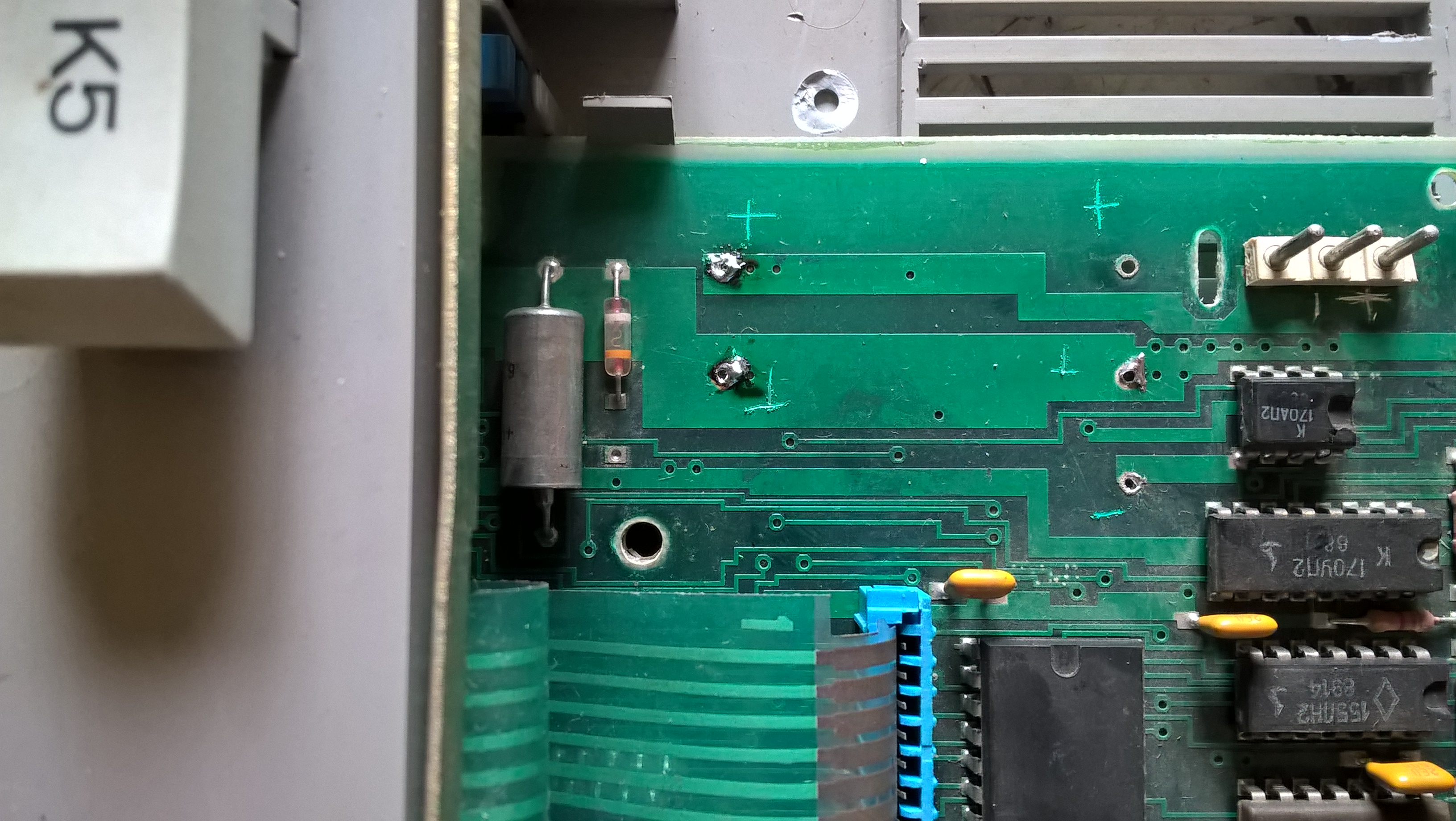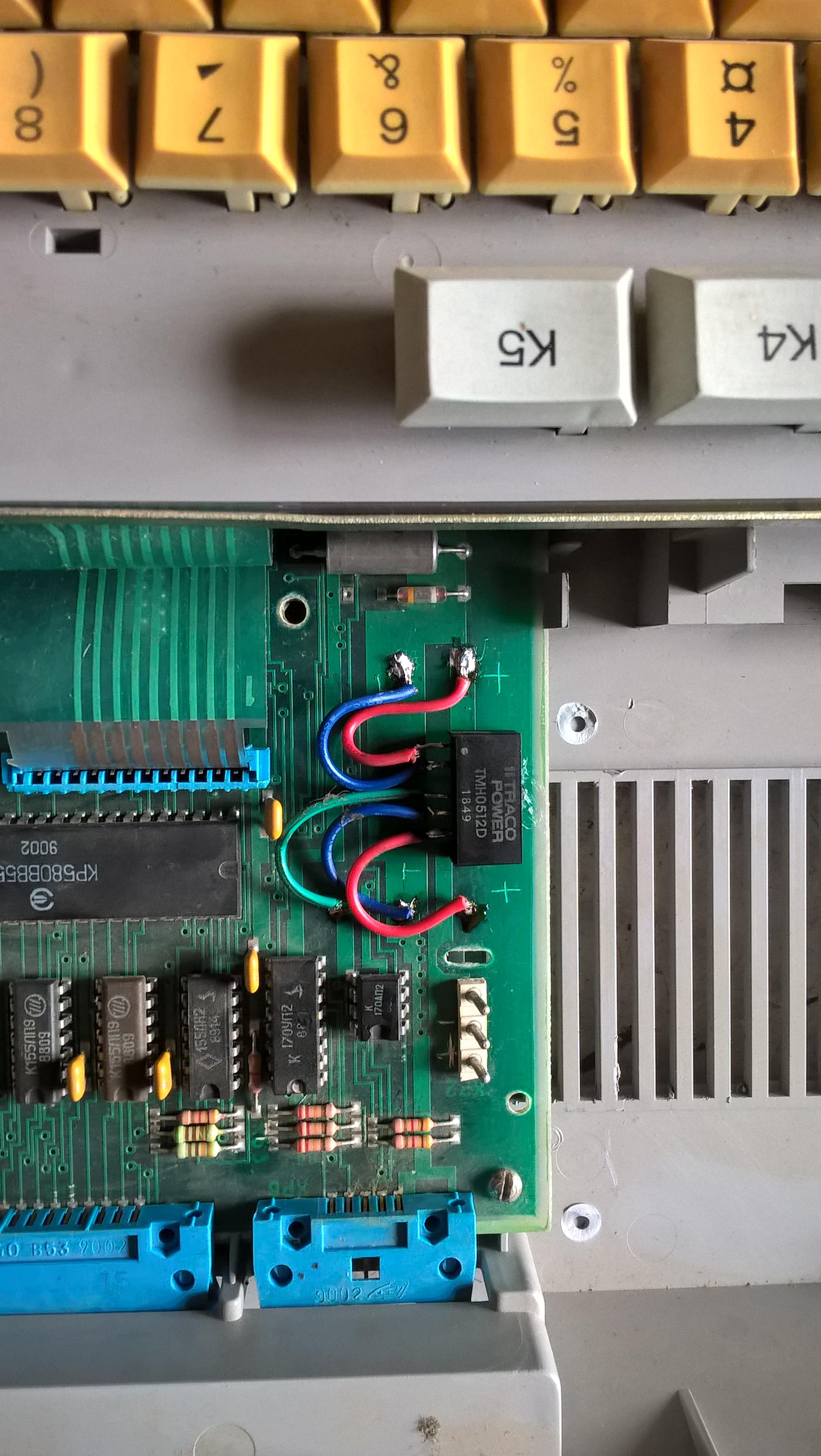Micro-computer UKNTS Electronics MS 0511 - installation of a DC-DC converter for power supply Joint S2 (RS232)
Good day, comrades Khabrovchane. Today I will continue my story about bringing my micro-computer UKNTS Electronics MS 0511 in a form convenient for use in the modern world.
The beginning of this story is here.
As I said earlier, the UKSC is equipped with the interface C2, which is a direct analogue of the RS-232C, which is remembered by everyone who caught the 486th and earlier IBM PCs. Her Majesty the Mouse connected to this “magic 9-pin connector”, without which it was rather inconvenient for Billy Gates to create. An external modem beeping into the telephone line was connected to the same connector so that the user could enter BBS. accept the FIDO newsletter or go to "These are your Internet" - download a book from Aldebaran or a porn from some secret file-worm and flood the forum, chat in IRC. Oh, there were times where all these Twitter Telegrams were!
The same connector came to the rescue when it was necessary to connect a pair of computers with each other - with a magic null-modem cable.
But despite its more than venerable age - the RS-232 standard was first proposed in 1962, and in 1969 the RS-232C standard was still in existence. Yes, of course, there has long been a USB that is now gradually moving to standard 3.0, but in industrial, server, military, telecommunications equipment and embedded systems, there is still either an RS-232C connector, or an invisible UART connector lurking somewhere on the board, or simply contact pads for soldering its findings. To which you can connect the adapter to USB and from your laptop “see what is happening in the system”, even if it seems to be completely dead and nothing can be achieved through other interfaces.
In my UKSC, this same interface also exists, under the name Joint S2, adopted for it in the USSR. But since the interface works using the + 12 / -12V levels for signal transmission, and only + 5V power is supplied to the UKSC board, a DC-DC converter is needed to produce the necessary voltages supplied to the 170AP2 and 170UP2 microcircuits, which directly coordinate the TTL UART output of the 1801VP1 controller -065 with external devices ± 12V signals. These microcircuits are soldered on my board, but to save money in the student machine, the DC-DC converter was not soldered. It was believed that the pupils of the UKSC will not be used to work through Joint C2, and if they are, then the converters can be soldered.
In the Chip & Dip online store, a suitable DC-DC converter was selected and ordered. I did not trifle and chose the TMH 0512D model capable of delivering 80 mA of outputs and with protection against short circuit.
Here is the link.
And here is the datasheet.
While the converter was coming to me, I turned to the collective intelligence of the PDP-11 architecture guru at zx-pk.ru and they sent me a photo of the nameplate from my native DC-DC that was once installed in the UKSC.
Photo of the nameplate of the converter.

It is called BPS 54 and now there is probably nowhere to buy it. Yes and there is no special meaning, the imported one can handle it.
In the meantime, the converter ordered at Chip and Dip came to me, having safely endured the journey by Russian Post thanks to a large sturdy box and many layers of cardboard inside. Well, these are not the Chinese with their thin bags, they know how they handle parcels at our Post Office!
Photo of the imported converter.

The same TMH 0512D.
Using the photo of the BPS 54 nameplate, I made marks directly on the board where which conclusions should be connected so as not to poke constantly into the monitor by double-checking my actions.

Fortunately, everything here is understandably done.
Further to the DC-DC converter pieces of wires were soldered according to its datasheet. The red and blue pair are + 5V and GND, and the green blue red is respectively -12 V GND + 12V. Then all the wires were soldered and the converter on a drop of hot-melt adhesive was glued to the board.

It is noticeably smaller than the Soviet one, but it works no worse.
In its final form, everything looks like this.

Also, the top cover was removed from the power supply unit, which prevented closing the case, and the LED was glued with the same hot glue into the hole in the upper cover case of the UKNTs. Now it remains to wait until GBS-8220 arrives from Russian Post from China and connect a VGA monitor to the UKSC to continue this story.
The beginning of this story is here.
As I said earlier, the UKSC is equipped with the interface C2, which is a direct analogue of the RS-232C, which is remembered by everyone who caught the 486th and earlier IBM PCs. Her Majesty the Mouse connected to this “magic 9-pin connector”, without which it was rather inconvenient for Billy Gates to create. An external modem beeping into the telephone line was connected to the same connector so that the user could enter BBS. accept the FIDO newsletter or go to "These are your Internet" - download a book from Aldebaran or a porn from some secret file-worm and flood the forum, chat in IRC. Oh, there were times where all these Twitter Telegrams were!
The same connector came to the rescue when it was necessary to connect a pair of computers with each other - with a magic null-modem cable.
But despite its more than venerable age - the RS-232 standard was first proposed in 1962, and in 1969 the RS-232C standard was still in existence. Yes, of course, there has long been a USB that is now gradually moving to standard 3.0, but in industrial, server, military, telecommunications equipment and embedded systems, there is still either an RS-232C connector, or an invisible UART connector lurking somewhere on the board, or simply contact pads for soldering its findings. To which you can connect the adapter to USB and from your laptop “see what is happening in the system”, even if it seems to be completely dead and nothing can be achieved through other interfaces.
In my UKSC, this same interface also exists, under the name Joint S2, adopted for it in the USSR. But since the interface works using the + 12 / -12V levels for signal transmission, and only + 5V power is supplied to the UKSC board, a DC-DC converter is needed to produce the necessary voltages supplied to the 170AP2 and 170UP2 microcircuits, which directly coordinate the TTL UART output of the 1801VP1 controller -065 with external devices ± 12V signals. These microcircuits are soldered on my board, but to save money in the student machine, the DC-DC converter was not soldered. It was believed that the pupils of the UKSC will not be used to work through Joint C2, and if they are, then the converters can be soldered.
In the Chip & Dip online store, a suitable DC-DC converter was selected and ordered. I did not trifle and chose the TMH 0512D model capable of delivering 80 mA of outputs and with protection against short circuit.
Here is the link.
And here is the datasheet.
While the converter was coming to me, I turned to the collective intelligence of the PDP-11 architecture guru at zx-pk.ru and they sent me a photo of the nameplate from my native DC-DC that was once installed in the UKSC.
Photo of the nameplate of the converter.

It is called BPS 54 and now there is probably nowhere to buy it. Yes and there is no special meaning, the imported one can handle it.
In the meantime, the converter ordered at Chip and Dip came to me, having safely endured the journey by Russian Post thanks to a large sturdy box and many layers of cardboard inside. Well, these are not the Chinese with their thin bags, they know how they handle parcels at our Post Office!
Photo of the imported converter.

The same TMH 0512D.
Using the photo of the BPS 54 nameplate, I made marks directly on the board where which conclusions should be connected so as not to poke constantly into the monitor by double-checking my actions.

Fortunately, everything here is understandably done.
Further to the DC-DC converter pieces of wires were soldered according to its datasheet. The red and blue pair are + 5V and GND, and the green blue red is respectively -12 V GND + 12V. Then all the wires were soldered and the converter on a drop of hot-melt adhesive was glued to the board.

It is noticeably smaller than the Soviet one, but it works no worse.
In its final form, everything looks like this.

Also, the top cover was removed from the power supply unit, which prevented closing the case, and the LED was glued with the same hot glue into the hole in the upper cover case of the UKNTs. Now it remains to wait until GBS-8220 arrives from Russian Post from China and connect a VGA monitor to the UKSC to continue this story.
